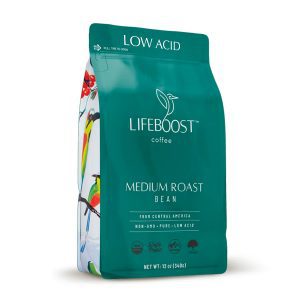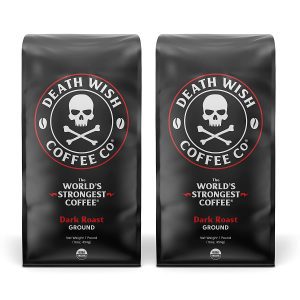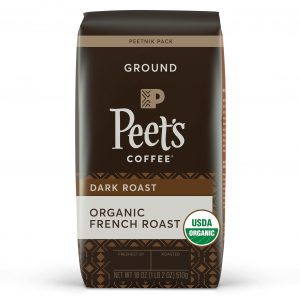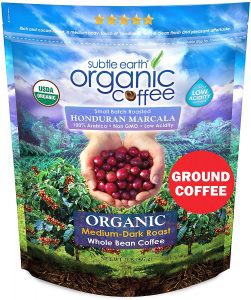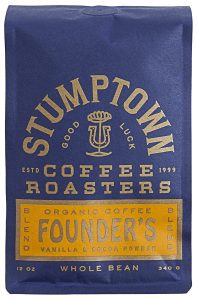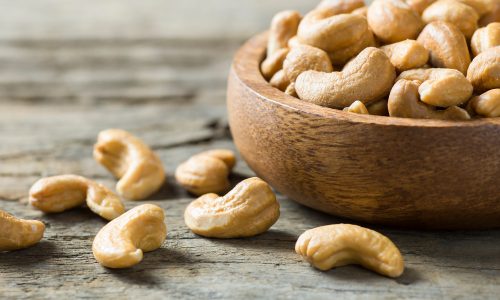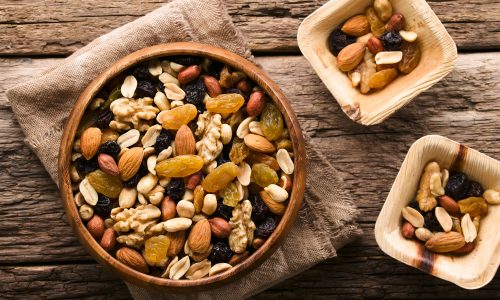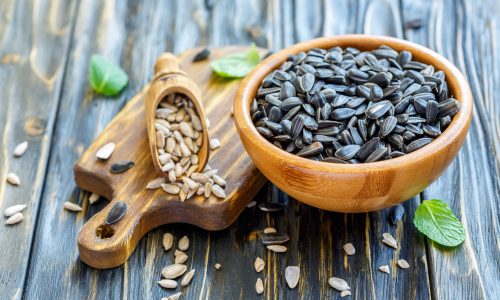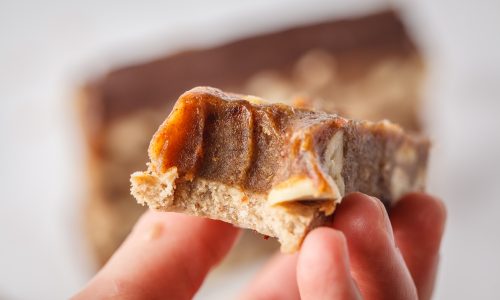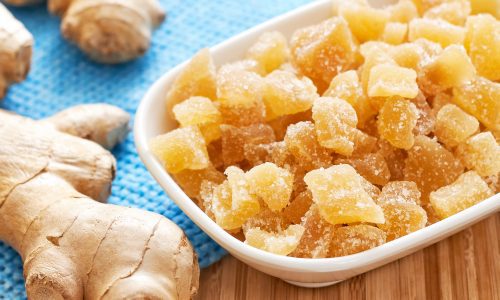The Best Organic Coffee
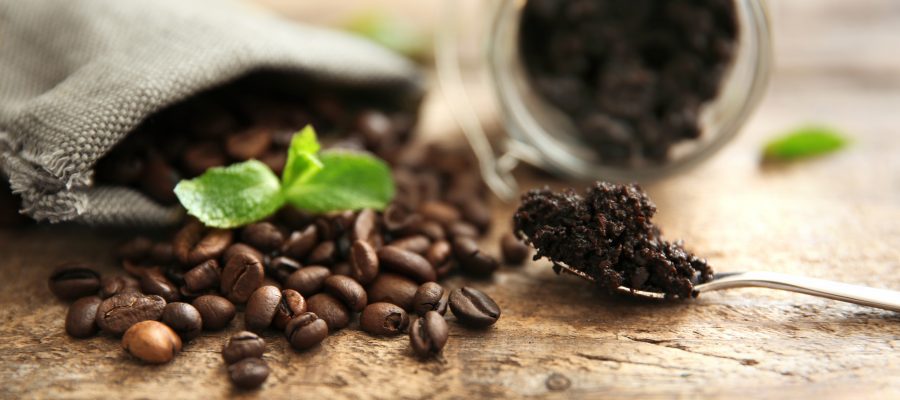
Our Review Process
Don't Waste Your Money is focused on helping you make the best purchasing decision. Our team of experts spends hundreds of hours analyzing, testing, and researching products so you don't have to. Learn more.
Our Picks For The Top Organic Coffees
- 1. Lifeboost Low Acidity Non-Gmo Organic Coffee
- 2. Death Wish Coffee Co. Highly Caffeinated Fair Trade Organic Coffee
- 3. Peet’s Coffee 100% Arabica French Roast Organic Coffee
- 4. Stumptown Coffee Roasters Whole Bean 100% Arabica Organic Coffee
- 5. Cafe Don Pablo Subtle Earth Low Acidity Organic Coffee
Low in acid but high in flavor, these whole coffee beans will provide a natural, great-tasting cup of coffee every time. The beans are shade-grown at a high elevation in Central America, with beans sun-dried and washed in spring water to ensure you get fresh, pure results. The beans are both organic-grown and chemical-free to keep you confident in ...
For Sensitive StomachsIf coffee causes digestive upset, this option can help, with low-acid coffee beans that will give you your daily boost of caffeine without discomfort.
Promising double the caffeine of other coffee brands, these coffee beans are slow roasted to give you a bold cup each morning. Each bag is filled with Arabica and Robusta coffee beans that have been carefully selected for that dark roast taste. They roast less than 65 pounds in each batch to ensure you get a fresh, consistent taste with every cup.
Bold FlavorA bold, flavorful taste and double the caffeine ensure you’ll get the taste you want with every cup.
You'll get an 18-ounce bag of deep-roasted coffee in this bag, making it perfect for daily coffee drinkers. The beans used to make this ground coffee are organic and free of the eight major allergens. The flavor is smoky and bittersweet with hints of caramel.
Pleasing AromaThis deep-roasted coffee smells delicious from the time you open the bag to your first sip.
This 2-pound bag of ground coffee is organic and GMO-free to provide a bold, natural flavor. The roast is medium-dark with a chocolatey taste that provides a velvety body and flavor depth that true coffee enthusiasts prefer. The coffee is low in acidity, making it suitable for sensitive stomachs.
Stays FreshThe bag these coffee beans arrive in reseals to make it easy to keep your coffee fresh between uses.
Buying Guide
In recent years, consumers have begun to realize just how superior organic coffee is to conventional coffee. Not only do you get a pure, fresh taste, but you can also cut down on the digestive upset that conventional coffee has by going organic.
There’s a reason for that pure taste. Organic coffee is carefully cultivated, eliminating synthetic fertilizers and chemicals that would otherwise show up in the growing process. Farms dedicated to organic coffee typically focus on the surrounding ecosystem the coffee plants are grown in, leading to healthy soil and coffee that’s rich in healthy antioxidants.
Coffee grows best in the shade, so organic coffee is often grown in South American rainforests to provide the shade and moisture that coffee beans need to thrive. Best of all, many of these rainforests have been designed for conservation to minimize impact to the ecosystem, so supporting organic coffee farmers is good for the environment overall.
But there are plenty of benefits to you as the coffee consumer when you buy organic. Since the growing process eliminates chemicals, organic coffee gives you a rich, flavorful coffee taste that you’ll notice with every sip.
But not all organic coffee is equal. Yes, you’ll be skipping pesticides and other chemicals when you go organic, but you also need to pay attention to the roasting process itself. Look closely at the roasting process an organic brand uses to ensure there are no chemicals or other additives introduced in the process of getting the coffee to the consumer. Those additives could counteract any antioxidant benefits you’ll enjoy, so it’s important to shop carefully.
Another thing to consider is whether the coffee brand really is organic. The U.S. Department of Agriculture certifies food products as organic, so any coffee promoting that it’s organic should have USDA certification to go with it. You can research a brand’s certification if you have doubts.
What to Look For
- The beans play a direct role in the quality of brew you get. Arabica has a better balance of healthy compounds, so focus your search on Arabica if you’re looking for that organic cup of coffee.
- You’ll find organic coffee is sold either as whole bean or ground. Although ground coffee can be convenient, there’s a big benefit to grinding the beans yourself. You’ll get a fresher taste when you’ve just ground the beans than you will if you purchase it after it’s been stored for weeks or months after being ground. If you don’t already have one, you’ll need to invest in a coffee grinder or a coffeemaker that grinds whole beans as part of the brewing process.
- Organic coffee beans can tend to produce a brew that’s lower in acid. This formula can cut down on digestive issues. If you find that coffee upsets your stomach, look for an organic coffee that’s labeled as low-acid.
- The growing process is only the first part of getting the coffee beans to your coffeemaker in the morning. Some manufacturers go so far as to ensure beans are only washed in spring water or sun-dried to preserve their purity.
- If you want to enjoy fresh-tasting beans or grounds, you’ll need to find a way to store it until you’re ready to use it. Once you’ve opened the bag, you’ll lose some of the freshness. You can purchase coffee canisters that have a vacuum feature to create an airtight seal that keeps the internal contents as fresh as possible.
- Coffees vary in flavor from light to dark roast, with plenty of variations in between. For light roasts, roasters pull the beans after the first “crack” is heard. It is at this level that you’ll see the highest level of caffeine and flavor. However, darker roasts tend to be less acidic. That smoky flavor you get with a dark roast coffee comes from oil on the surface of the bean.
More to Explore
Coffee beans aren’t merely plucked from trees. They grow inside coffee cherries, which start with a green color and change to red before they’re harvested. To get one espresso shot, harvesters must pull 40 coffee beans from those cherries.
Harvesting is no easy feat, either. There are two ways to harvest coffee beans: strip picking and selective picking. With strip picking, harvesters take all the cherries from a single tree, pulling both ripe and unripe berries. This is the usual method for Robusta beans, which are responsible for 75% of the coffee in the world. Arabica coffee, as well as some Robusta, are both selective picked. With selective picking, only the ripe cherries are picked, with workers returning over subsequent weeks to get other cherries as they ripen.

